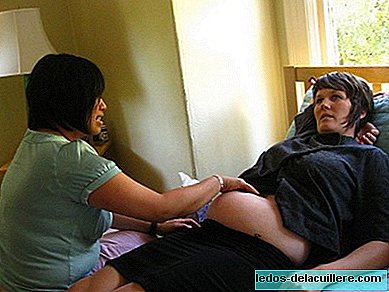
When an obstetrician or midwife wants to know how a childbirth evolves, it makes women a vaginal touch. It is an intervention in which two fingers are inserted into the vagina in order to use the professional's sense of touch to determine how much the woman has dilated.
The problem is that it is not a “test” that can be done very often, because the vaginal touchIn addition to being annoying to many mothers and in addition to generating anxiety, it can increase the risk of infection and can also help the mother to disconnect from her body and her birth and (re) connect with the world, distracting her.
For this reason it is recommended to make the minimum possible vaginal touches and to determine those minimums, the Ministry of Health has assessed the scientific evidence in this regard and explained in the Clinical Practice Guide on Normal Childbirth Care how many touches would be desirable for a woman who is in labor.
What does the scientific evidence say
In a study in which 146 mothers who gave birth in 1986 and who had a birth infection were analyzed, compared to the total births that year (8428) in Nigeria, it was observed that the factors that predisposed to suffer A puerperal infection was anemia in pregnancy (increased risk by 69.2%), prolonged labor, defined as a period greater than 12 hours (increasing the risk by 65.7%), performing five or more vaginal touches (increased risk by 50.7%) and artificial rupture of membranes (increased risk by 31.5%).
Other studies comment on something similar, the number of vaginal touches performed when predicting a maternal and / or neonatal infection being especially relevant. That is to say, There is a direct relationship between the number of touches made to a woman and the risk of infection by both the mother and the baby.
What are the recommendations?
Knowing this, the Ministry of Health recommends:
- That under normal conditions the vaginal touches are performed every 4 hours.
- Vaginal exams will be performed before 4 hours in those women whose delivery progresses slowly, if there is a presence of complications or if the woman shows a feeling of wanting to push (in these cases professionals can skip the 4-hour rule to make an assessment in that specific moment).
And before doing a vaginal touch, the following should be taken into account:
- Should confirm that touch is really necessary and that the information obtained will be important in the future of childbirth, as it will allow decisions to be made.
- That a vaginal touch is an exploration that can be very annoying, especially if the woman does not feel comfortable, and I do not speak physically, but psychologically, with this invasion. By this I mean that it is imperative that the professional presents himself, that he communicates exactly what he is going to do, that he explains what he expects to find, that he answers any doubts about it, that it is done with maximum privacy and, obviously, that he does it with the express consent of the mother and in a climate of maximum respect.
- That vaginal touches are associated with an increased risk of infection
- That in case of not finding the expected results, they communicate with delicacy, with empathy and showing themselves, the professional, as close to the woman as this one requires (that is, to solve all the doubts of the mother and to lend herself you can do something for her).
I don't know what experiences you had with the vaginal touches, but I have found women who have taken it as something else in childbirth, without any problem, and others who have seen as professionals and students almost queued to touch their vagina to have to end up hearing from the mouth of the gynecologist “no progress ... of course, we have touched it so much that in the end we have hardened the cervix ”, ending the delivery, as you imagine, in caesarean section.












